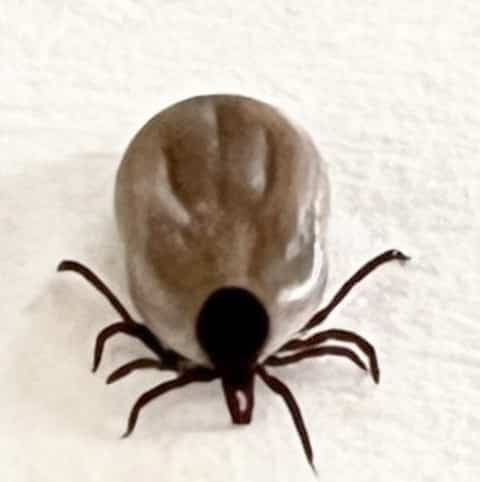Anaplasmosis, a potentially fatal bacterial infection transmitted by ticks and whose symptoms are similar to COVID, is making its way in Estrie where dozens of cases have been listed for two years, which worries experts.
About fifty cases of the bacterial infection were listed around Bromont, in Estrie, in 2021. More recently, The newspaper learned that a case had already been reported to the Center hospitalier de l’Université de Sherbrooke (CHUS) at the end of last April.
“The 2021 cases are just the tip of the iceberg! I am convinced that there are more who have gone under the radar, ”says the Dr Alex Carignan, doctor specializing in public health at the CHUS.
In a scientific article that he signs with five public health specialists in the Canada Communicable Disease Report 2022, 25 human infections known at that time were analyzed. This small epidemic (which is called “aggregate”) already represented “the largest number of cases reported in the same region in Canada”, write the authors.
Outdoor activities
There were no deaths, but one in two infected people had to be hospitalized, some for four days. One person was treated in intensive care. Patients have been exposed to the bacteria during outdoor activities ranging from gardening to mountain biking.
Since the publication of the article in 2022, at least 25 new similar cases have been reported to medical teams who follow the evolution of this disease, different from Lyme disease, but transmitted by the same blacklegged tick (Ixodes scapularis), well established in southern Quebec.
The Integrated University Health and Social Services Center in Estrie, which announced the first case of anaplasmosis in Quebec in July 2021, has implemented various approaches to raise public awareness of the dangers of the infection. Leaflets and newsletters circulated in campgrounds, among farmers, in forestry groups, among doctors and pharmacists and among tourist and outdoor associations.
“The training of doctors does not devote enough hours to emerging infectious diseases”, mentions the Dr Carignan who nevertheless obtained that the faculty of medicine of his university integrates this reality into the university curriculum. He gives about ten training sessions a year to his colleagues to better equip them.
- Ticks can also transmit Lyme disease, listen to the DG of the Quebec Lyme disease association via :
Because of its proximity to the American border, where anaplasmosis has been raging for 20 years (see box), Estrie is the gateway to similar diseases transmitted by ticks. In addition to this infection, there is concern about the arrival of bacteria causing meningitis (Borrelia miyamotoi) and babesiosis (Babesia microti) and the Powassan virus, responsible for encephalomyelitis. The INSPQ located ticks carrying the first two in 2021, but not the virus.
Like a flu
Much like the flu and COVID, anaplasmosis causes fever and headaches, as well as body aches and sometimes nausea and diarrhea. The severity of symptoms may worsen in immunosuppressed people if the infection is not treated. Symptoms most often appear 5 to 14 days after infection.
A course of antibiotics usually clears the infection within a few days. “But health care personnel are not always able to make a connection with a tick bite that occurred days or even weeks earlier,” adds Dr.r Carignan.
Nothing for 2022
It is impossible to know what the situation was during the summer of 2022, because the National Institute of Public Health, which collects the data for this notifiable disease, does not plan to make them public before next “mid-June”, says namely spokesperson Richard Daigle.
An infection from the south
In the United States, anaplasmosis was first identified in the 1990s and became a public health concern in 1999. There were 368 cases in 2000 and 5655 cases in 2019.
The most affected regions (rate of 13 cases per million inhabitants) are Maine, New Hampshire, Vermont, New York, Minnesota, North Dakota and Wisconsin.


